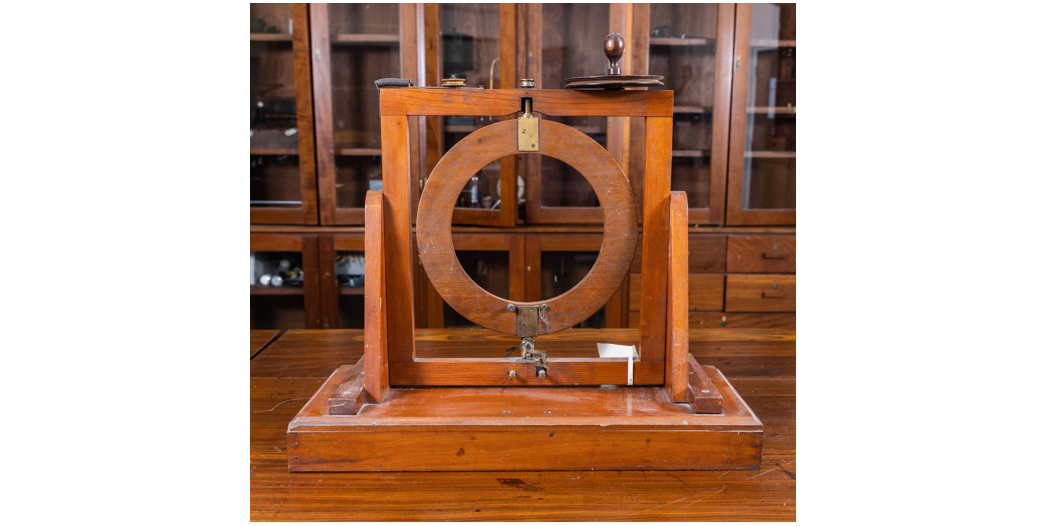- Home
- Semester and Timetable Information
- Study Physics
- Our Research
- Our People
- Careers and Alumni
- Seminars, News and Events
- Outreach and School Resources
- About the School
- What is Physics
- The Crawford Observatory
- Frequently Asked Questions
- UCC Futures Quantum & Photonics
- Supports/EDI
News
Delezenne Circle

Delezenne's Circle is a type of earth inductor, an instrument developed by Charles Delezenne in 1844 to demonstrate and measure the strength of Earth's magnetic field by inducing an electric current in a moving coil within that field.
An earth inductor consists of a coil of wire that can be rotated and oriented at different angles. As the coil moves through the Earth's magnetic field, it generates an electric current, a phenomenon known as magnetic induction. The magnitude of the induced current is directly related to the strength of the Earth's magnetic field and the way the coil is moved through it. The unit pictured is recorded in the National Inventory of Historic Scientific Instruments by Charles Mollan, entry 2810 UCP 263. The device comprises wooden base, supports, square frame and coil ring housing, brass fittings, handle and pulley wheel to turn coil. The mahogany frame pivots on supports, a wood pulley wheel drives a brass pulley attached to a brass fitting on the revolving coil. The device was fabricated circa 1910.
